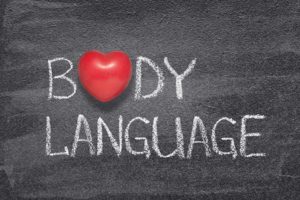 Whether it’s one-on-one or in front of a group, HOW you say it far more important than WHAT you say. Depending on who you ask, 60% to 93% of the meaning audiences derive from communication comes from nonverbal communication.
Whether it’s one-on-one or in front of a group, HOW you say it far more important than WHAT you say. Depending on who you ask, 60% to 93% of the meaning audiences derive from communication comes from nonverbal communication.
Even if you don’t talk, you can’t not communicate.
So what I’m talking about are gestures, pace, pauses, facial expressions, body angles, level of energy/animation and more… But you get the idea, everything from what you wear to how you deliver it. Effective presenters not only use powerful words, they also use compelling nonverbal communication techniques. The credible communicator strives for congruency in both verbal and nonverbal communication.
- Here are a few tips to apply to your one-on-one or public speaking non-verbal arsenal:
- Square up with the person you’re talking with or the audience
- Maintain good eye contact—avoid distractions such as looking at notes or playing with your phone
- Maintain appropriate distance—avoid the perception of invading personal space (some people are fine with close, face-to-face communication while others are not – know your audience)
- Lean in physically and mentally—the point is to make sure the other person knows that you value them as well as the points raised
- Ensure congruence between your facial expressions and body language and the words you’re saying (for example, it is incongruent to frown and slump your shoulders when you’re telling someone you’re glad to see them)
- Understand that you can use your body language to:
- Repeat the message your words are saying
- Add to the meaning of your message
- Accent or make the message stronger, like smiling warmly when you say hello
- Remember that nonverbal communication includes moderating your voice, pitch, volume, and rate of speech
At KristanGetsy.com you can inquire about a training workshop specific to non-verbal development.



Recent Comments